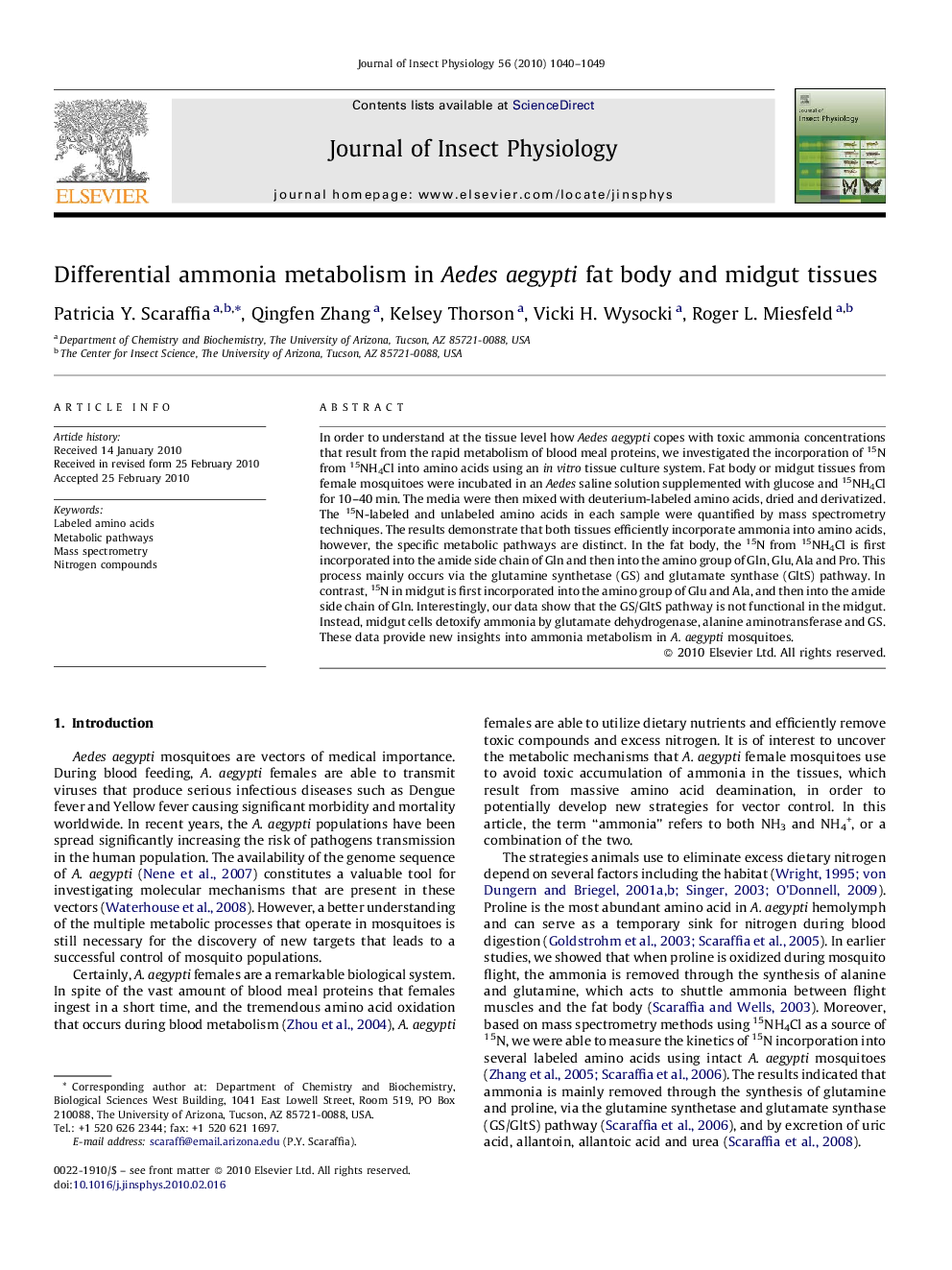| Article ID | Journal | Published Year | Pages | File Type |
|---|---|---|---|---|
| 2840913 | Journal of Insect Physiology | 2010 | 10 Pages |
In order to understand at the tissue level how Aedes aegypti copes with toxic ammonia concentrations that result from the rapid metabolism of blood meal proteins, we investigated the incorporation of 15N from 15NH4Cl into amino acids using an in vitro tissue culture system. Fat body or midgut tissues from female mosquitoes were incubated in an Aedes saline solution supplemented with glucose and 15NH4Cl for 10–40 min. The media were then mixed with deuterium-labeled amino acids, dried and derivatized. The 15N-labeled and unlabeled amino acids in each sample were quantified by mass spectrometry techniques. The results demonstrate that both tissues efficiently incorporate ammonia into amino acids, however, the specific metabolic pathways are distinct. In the fat body, the 15N from 15NH4Cl is first incorporated into the amide side chain of Gln and then into the amino group of Gln, Glu, Ala and Pro. This process mainly occurs via the glutamine synthetase (GS) and glutamate synthase (GltS) pathway. In contrast, 15N in midgut is first incorporated into the amino group of Glu and Ala, and then into the amide side chain of Gln. Interestingly, our data show that the GS/GltS pathway is not functional in the midgut. Instead, midgut cells detoxify ammonia by glutamate dehydrogenase, alanine aminotransferase and GS. These data provide new insights into ammonia metabolism in A. aegypti mosquitoes.
